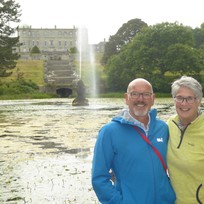( Overview
/ TwoBullocks on a Boat Go Local
Felixstowe Ferry, a village set on the mouth of the River Deben, where a ferry runs to the Bawdsey Peninsula.
The first Chain Home Radar station was built at Bawdsey Manor in 1936, and used as a base during the Cold War until the 1990s. Built in 1886 and later enlarged by Sir William Cuthbert Quilter, it was requisitioned by the Devonshire Regiment in WWI. It is now used for children’s adventure holidays.
Once home to fishermen and river pilots who navigated boats along the River Ore, Shingle Street is a small beach at the mouth of the River Ore.
The safe water mark at the entrance to the River Ore which runs alongside a 10 mile-long shingle spit known as Orfordness. A bell tolls within the mark to help sailors navigate in poor visibility, but it often sounds ominous as you head towards the beach before turning sharply into the river.
The unique polygonal tower of the 12th century Orford Castle stands beside the village and port developed by Henry II. The medieval Church of St Bartholomew was the location of the first performances of four works by Benjamin Britten.
Ostensibly a navigational beacon, in reality Black Beacon was a homing beacon for military aircraft, and also housed experimental radio apparatus. The Power House beside it housed a generator.
Completed in 1956, Laboratory 1 was the first of six atomic weapon test cells. It was used for both mechanical and vibration testing and drop tests.
The Atomic Weapons Research Establishment (AWRE) buildings were created for testing the components of nuclear weapons; the site looked at the ballistics, detonation and environmental survivalists of the bombs, rather the than bombs themselves.
Old and new defence structures. The spit was also home to a distinctive red and white lighthouse completed in 1792, but decommissioned in 2013 and demolished in 2020 because of the encroaching sea.
Aldeburgh, home of the composer Benjamin Britten who founded the Aldeburgh Festival in 1948. The River Ore becomes the River Alde here.
Magnox Sizewell A nuclear power station was decommissioned in 2006, but Pressurized Water Reactor Sizewell B is still active. Sizewell Marshes are part of a 356 acre nature reserve (Sizewell Belts), one of the main wetlands in East Anglia for wild flowers, rare invertebrates and birds.
Unsure of what this is, but assuming it’s part of a monitoring system for the power station we gave it a wide berth.
Southwold with its lighthouse nestled in its centre. Mentioned in the Domesday Book (1086), it was a fishing and trading port. Over the centuries a shifting shingle bar at the mouth of the harbour prevented it from becoming a major modern port.
Built in 1887, and electrified in 1938, the range of Southwold Lighthouse was increased in 2012 in advance of the decommissioning of the Orfordness lighthouse.






























 Sign in with Apple
Sign in with Apple  Log in with Facebook
Log in with Facebook